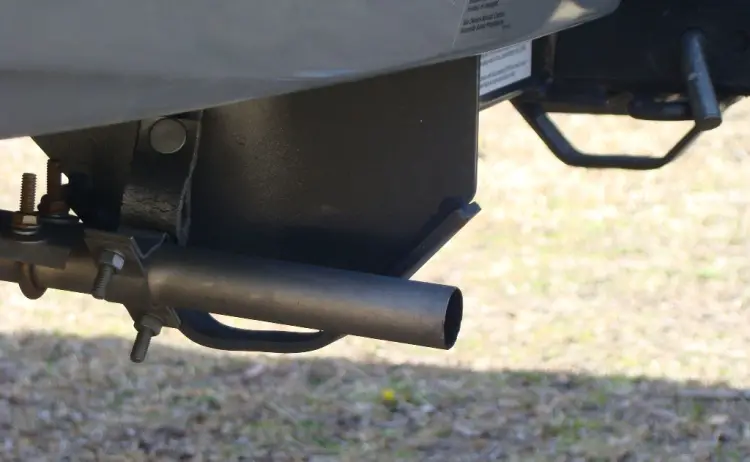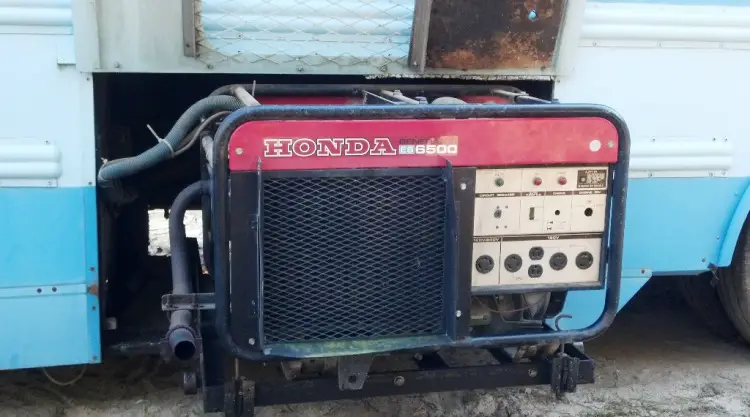
When it gets cold outside I like to remind folks about the dangers of carbon monoxide (CO) gas. Carbon monoxide gas is invisible, odorless, and deadly!
It is produced by the partial combustion of solid, liquid and gaseous fuels. This includes gasoline, propane, natural gas, oil, wood, & coal. It is extremely serious when combustion by-products are not vented outside, or when you are exposed to any source of CO gas. Carbon Monoxide is the number one cause of poisoning deaths each year in the United States.
Carbon monoxide poisoning is toxic and can be deadly to both humans and animals. CO poisoning occurs when carbon monoxide gas is inhaled. The severity of the CO poisoning depends on the level of CO gas you are exposed to, and the duration of the exposure. The good news is the threat of CO poisoning can be lessened through awareness and education. Let’s take a look at what we can do to prevent the danger of carbon monoxide poisoning.

When it comes to RVs and camping carbon monoxide gas usually results from:
- Exhaust leaks from a vehicle engine or a generator.
- Improper use of portable gas powered heaters.
- Someone else’s vehicle or generator when camping in close quarters.
- Malfunctioning or unvented LP gas appliances
It wasn’t until January 1, 2005 that every new RV was required to have a CO detector installed. That means there are literally millions of older RVs out there with no CO detectors. If your RV doesn’t have a carbon monoxide detector you need to purchase a battery operated carbon monoxide detector designed for use in RVs. Test the carbon monoxide detector every time you use the RV, and on battery operated models replace the carbon monoxide detector batteries when you change clocks for daylight savings time.
Here are some important CO prevention tips:
- Inspect the generator exhaust system before using the generator, every time.
- Avoid leaving windows down and roof vents open when in close proximity to vehicle and/or generator exhaust.
- Follow all directions and safety cautions and warnings when operating portable gas powered heaters.
- If you use a portable generator direct the exhaust well away from the camping area.
- Never use the range burners or oven to heat the RV.
- When cooking with the range burners use the range top fan & leave a window cracked open for fresh air and ventilation.
- If somebody in close proximity to you is running a generator ask them to turn it off. They might be upset with your request, but it can save lives.
 Note: It’s also important to know that carbon monoxide detectors have expiration dates. I write the expiration date on the outside cover so I can check it in a glance. Replace the detector before it expires.
Note: It’s also important to know that carbon monoxide detectors have expiration dates. I write the expiration date on the outside cover so I can check it in a glance. Replace the detector before it expires.
Carbon monoxide symptoms are similar to flu symptoms, but without the fever. Teach everybody that will be in the RV how to recognize carbon monoxide symptoms.
CO symptoms include:
Dizziness
Vomiting
Nausea
Muscular twitching
Intense headache
Throbbing in the temples
Weakness and sleepiness
Inability to think coherently
If you or anyone else experiences any of these symptoms take the following steps immediately:
- Get to fresh air immediately.
- Shut the vehicle, generator or source of the CO poisoning down and do not operate it again until it has been inspected and repaired by a professional.
- Account for everybody that is with you.
- Call 911 for emergency assistance.
- Do not re-enter the RV.
- If the symptoms persist seek medical attention.
The more you know about CO poisoning and what steps you can take to prevent it the safer your RV trips will be.
For more helpful information on using and maintaining your RV check out all of our RV training products
Have a safe and fun fall and winter camping season.
Mark Polk
Visit our in depth RV Online Training site